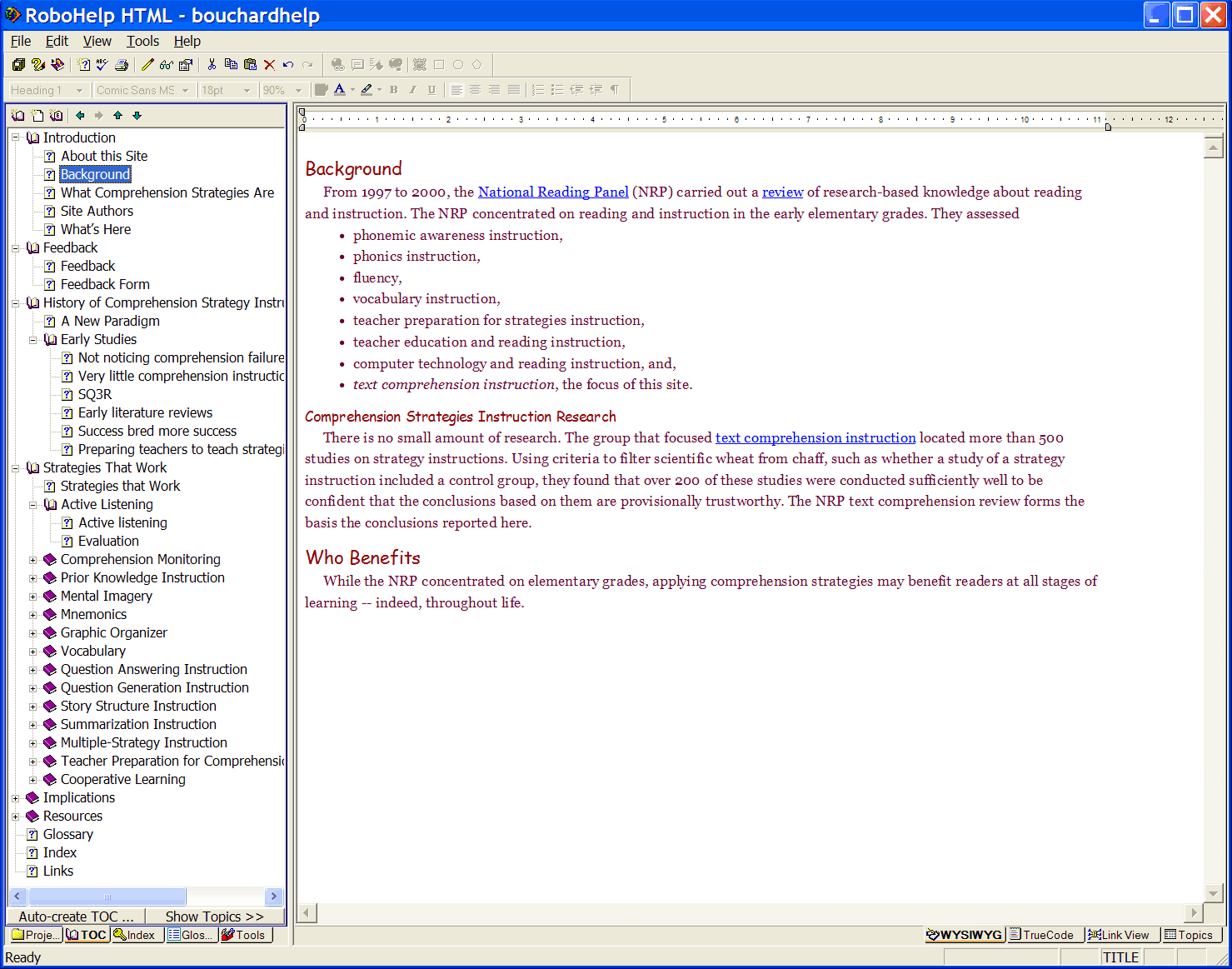|
|
|
|
|
|
Graphic organizer instruction encourages readers to construct displays that organize ideas based on expository reading of the text. Graphic organizers aim at creating awareness of text structures, concepts and relations between concepts, and tools to visually represent text relationships.
If not already visible in the left frame, click the Show button in the upper right hand corner of this frame to reveal the Table of Contents in the left frame. A table of contents is also a kind of graphic organizer; scanning it can give a visual impression of the text logic.

Not surprisingly, diagrams, pictorial devices, and story maps all help outline the relationships among text ideas.
Story map
Graphic organizers, which reveal text organization, in turn help readers write well-organized summaries. The instruction may be especially useful when reading subject matter in content areas such as science or social studies. In eleven studies reviewed by the NRP that used graphic organizers with readers in grades four through eight, readers usually benefited in remembering what they read, in improved reading comprehension, in improved achievement in social studies or and science courses. For example, in 1991 Bonnie Armburster and her colleagues compared the effectiveness of a graphic organizer instruction teaching fourth- and fifth-grade social science students to visually represent the important ideas in a social science text. In contrast, the control students' instruction consisted of workbook activity directions recommended in the teacher's edition of the social science textbook. In Armbuster's study, the fifth-, but not necessarily the fourth-grade students, who received the graphic organizer cognitive strategy instruction scored higher on recall and recognition measures than the controls who received workbook activity instruction.